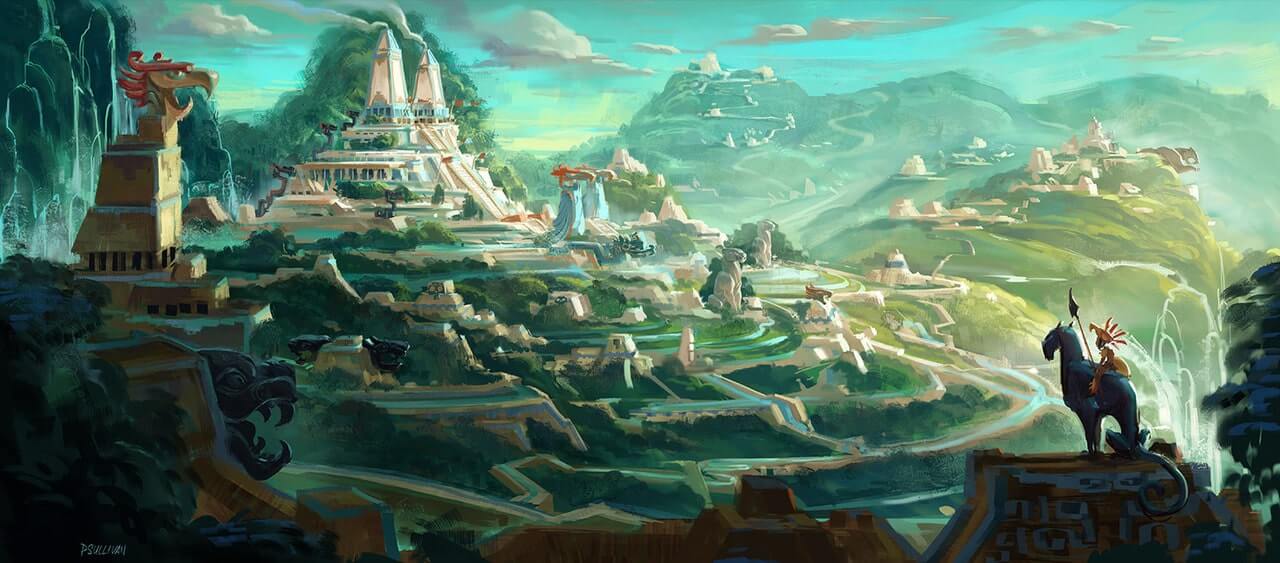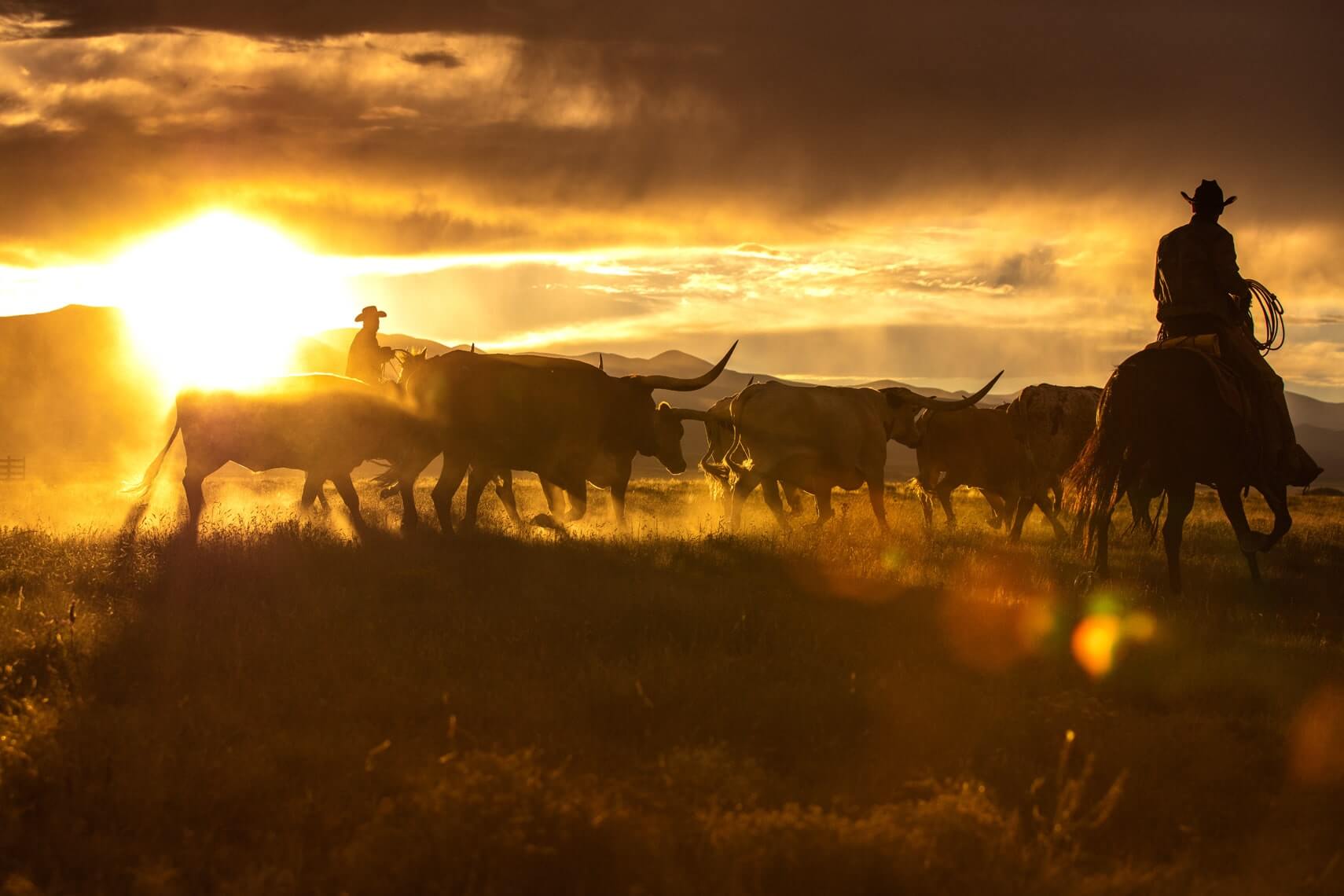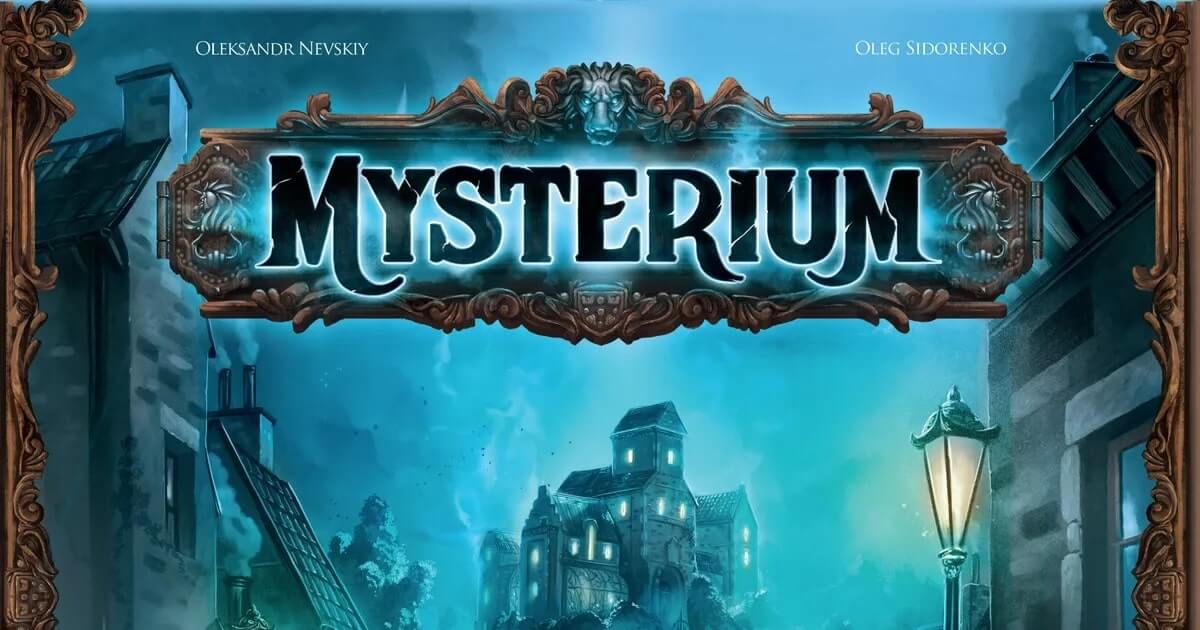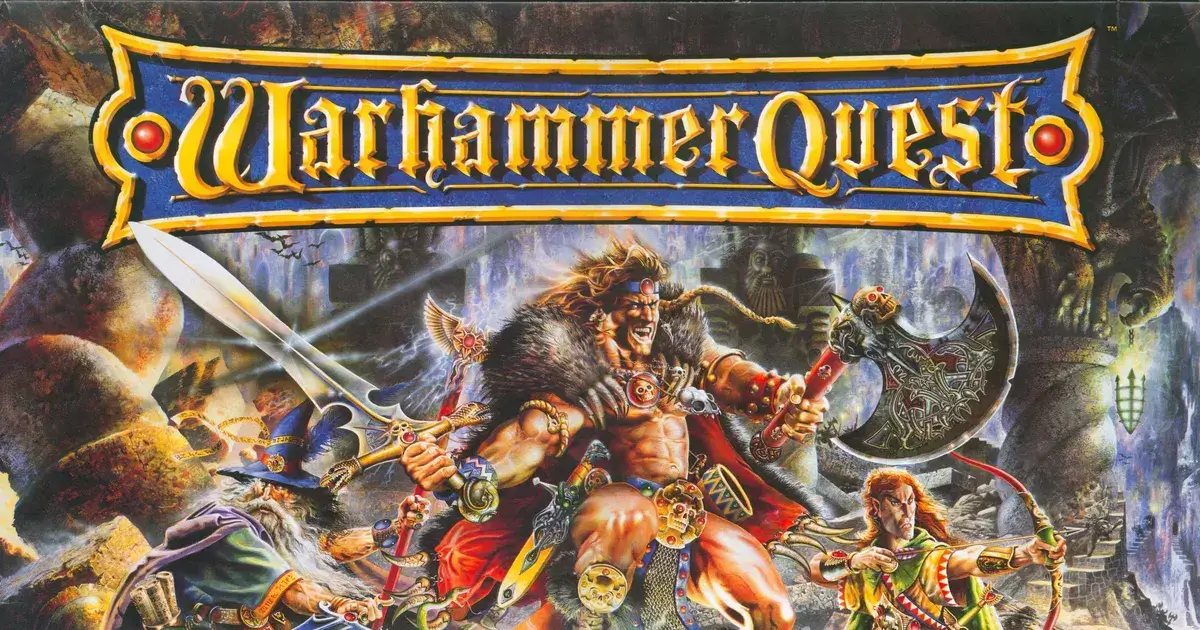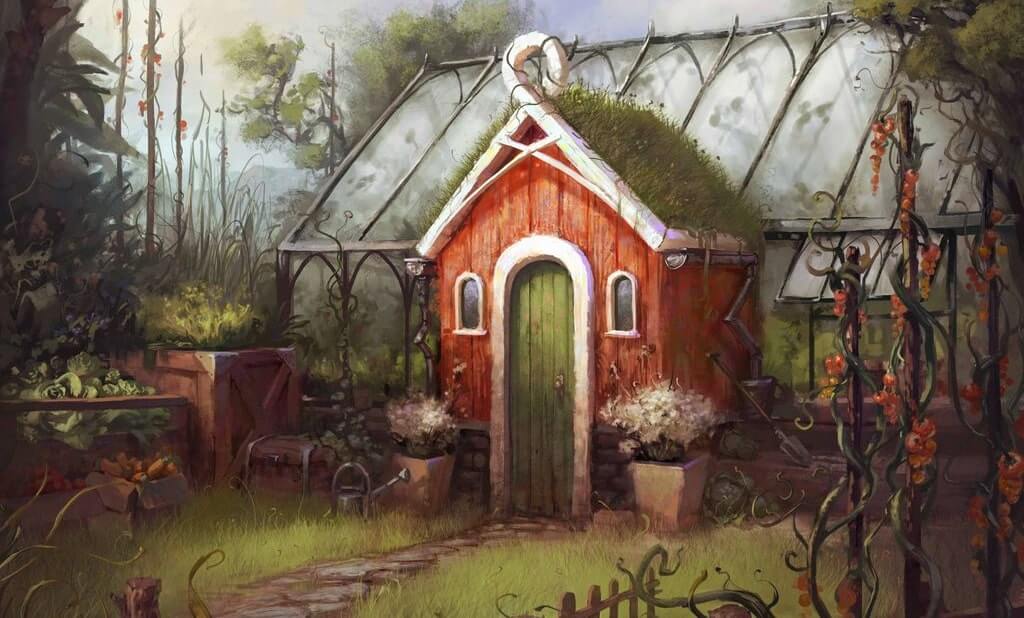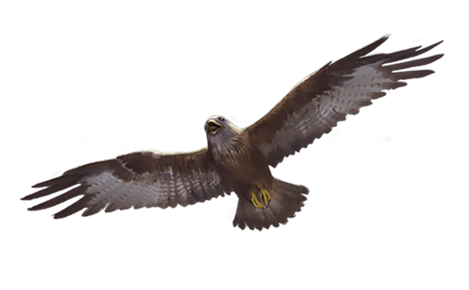Long ago, in the heart of the Mayan civilization, there lived a tribe of people who were determined to become the best they could be. They were a proud people, fiercely independent and deeply connected to their gods and traditions. Using this connection, they had developed a remarkable calendar that accurately predicted the cycles of the sun and the moon.
The tribe followed this calendar religiously, using it to plan their planting and harvesting seasons, as well as their religious ceremonies and festivals. They believed that by following the calendar and worshipping their gods, they would be blessed with prosperity, good health, and happiness.
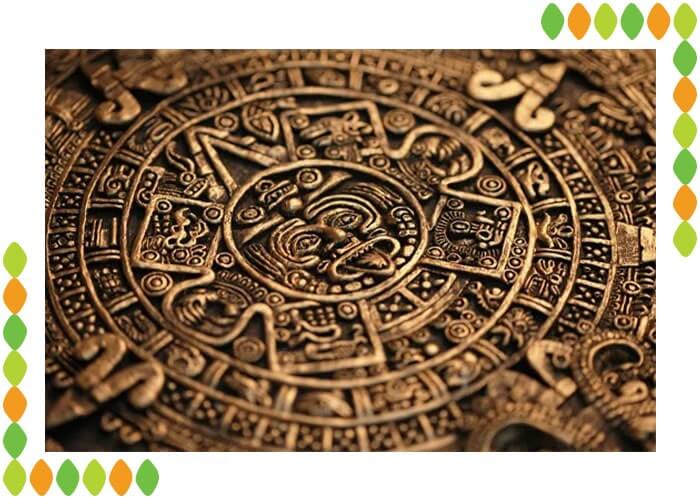
But their leader knew that there was more to achieving greatness than just following the calendar. He believed that the tribe needed to constantly strive to improve themselves – to develop new skills, create new technologies, and explore new ideas.
Under his guidance, the tribe began to experiment with new farming techniques, using irrigation systems and crop rotation to increase their yields. They developed new tools and weapons, using obsidian and other materials to create sharp blades and arrowheads.
But perhaps most importantly, they began to explore the arts and sciences. They studied mathematics, astronomy, and medicine, striving to understand the world around them and make new discoveries.
As the years passed, the tribe grew stronger and more prosperous. They built magnificent temples and pyramids, dedicating them to their gods and using them as centers for learning and worship.
And all the while, they continued to follow the Mayan calendar, using it as a guide for their daily lives and their spiritual journey. They knew that by following the old ways and striving for greatness, they would be blessed with the favor of their gods and the admiration of their peers.
The Mayan civilization eventually faded into history, but the legacy of their greatness lived on. The calendar that they had created continued to be used for centuries, and their achievements in agriculture, technology, and culture inspired generations of people to strive for greatness in their own lives.
This is the story of Tzolk’in: The Mayan Calendar, a beloved strategy game set in the ancient Mayan civilization. Let’s learn all about this historic game.
Tzolk’in: The Mayan Calendar Board Game Overview; First Days of the Ancient Calendar
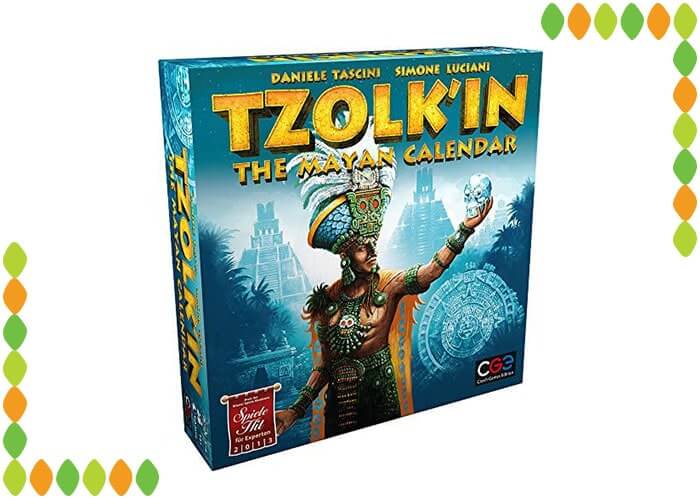
Tzolk’in: The Mayan Calendar is a strategy board game published in 2012 by Czech Games Edition. The game revolves around the Mayan calendar and is set in ancient Mayan culture. The goal of the game is for players to lead Mayan tribes and create the most prosperous civilization by the end of the game. The game’s new and unique gameplay as well as its historical theme and setting have made it a favorite among fans of board games.
Tzolk’in is a worker placement game where players place their workers on various spaces around the board to perform actions. The game features a unique twist on this mechanic as the workers are placed on gears instead of spaces around the board. Each round the gears spin, and the workers are moved along with them. This is the first board game I’ve seen that features this new mechanic; dynamic worker placement.
Round Overview
The game is played over a series of rounds with players placing and picking up their workers, with each round representing one day in the Mayan calendar. The central gear, which is also the round marker, is connected to five smaller gears, with each one representing a different temple where players can perform actions.

After each round, the central gear rotates to signal the end of the round, and workers on the other gears are rotated to other spaces. The more a worker stays on a gear and “moves up” the action track, the more valuable that action becomes. However, leaving workers on the board for too long can prevent players from taking important actions. It’s up to the players to figure out where and when to place their workers and the best time to pick them up.
Players also have to manage their resources in the most efficient way to build the most valuable structure, pay the best sacrifices, and advance along the technology track. In other words, players must find a balance in their actions and resources to win the game.
The technology track featured in the game is one of the most important and fun mechanisms in the game. By advancing along different paths of technological development players can unlock new abilities and bonuses, such as increased resource production or additional victory points. The track provides progression and development for the players through the game and gives them a guideline on how to approach different strategies.
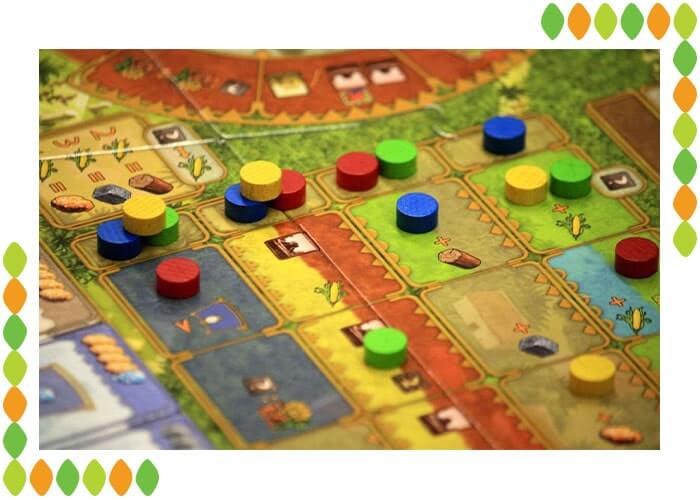
Scoring
At the end of the game, players score points based on a variety of factors, such as constructed buildings, advancement on the technology track, and collected resources. Players gain points for their achievements and the player with the most points is declared the winner of the game.
One of the main scoring criteria for players is constructed buildings. The building tiles are divided into three levels, with increasing value and complexity. Each of these buildings provides different bonuses and abilities. The higher-level buildings require more resources and time to build, but grant better benefits. Players must try to balance the construction of buildings with other actions in order to build the best civilization.
There are also some endgame scoring opportunities for players, such as bonus points for constructing the most buildings of a certain type or reaching certain levels on the technology track. These endgame bonuses encourage players to spread their focus among different strategies in order to win the game.
Artwork
As mentioned before, Tzolk’in is set in an ancient Mayan civilization and it makes great use of elements in Mayan culture and mythology. The artwork and the core mechanics are inspired by Mayan culture and art, and the components in the game feature detailed Mayan patterns and symbols. The gears that represent the Mayan calendar as the central theme add to the historical authenticity of the game and provide an immersive gameplay experience.
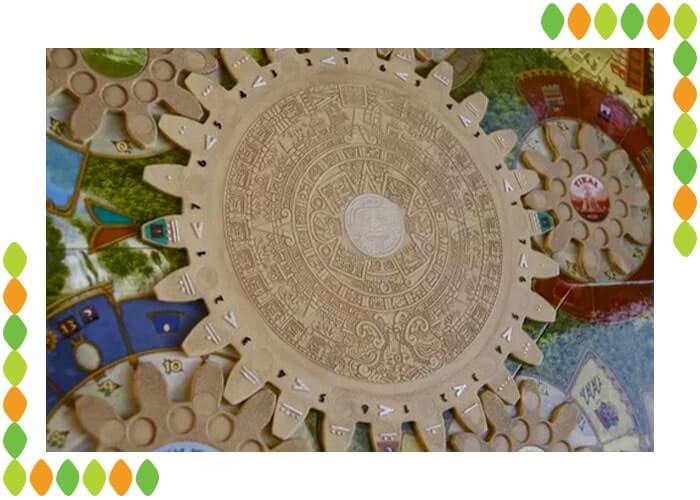
Player Interaction
While the game doesn’t feature any PVP combat or any direct conflict, player interaction in the game is high. This is because players compete over gaining limited resources, constructing the best buildings, and reaching certain positions on the technology track. Players can block each other’s actions by strategically placing their workers on certain spaces to add tension and a sense of urgency to the game. This forces players to pay close attention to their opponents’ actions and adjust their own strategies based on that.
Tzolk’in: The Mayan Calendar Board Game Gameplay; Rock and Rotate
Now that you’re more familiar with this marvelous dive in history, keep reading if you want to learn how to play it.
Setup
To set up a game of Tzolk’in, each player must choose a color and get three workers in that color. Deal four facedown starting wealth tiles to each player. Each player secretly chooses two of them to keep as starting resources. These could feature resources, points, workers, technological advancements, and more. Each player also receives seven markers in their color. Place four of them on the first spaces on the technology tracks, and the other three on the first spaces in the gods’ temples.
Separate the building tiles into three piles, age 1 and 2 buildings, and the most valuable monuments. Randomly deal six of the monuments in their spaces on the board. The remainder of the monuments are returned to the box and aren’t featured in this game. This means there are only six monuments available for all players to build, so the stakes are high.
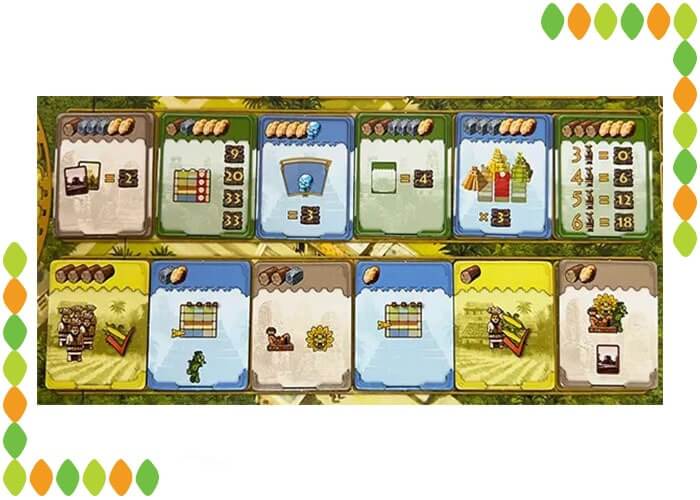
Randomly deal six age 1 buildings on their spaces on the board, and set the age 1 and 2 building tiles next to the board. Place the corn and wood harvest tiles in the jungle according to the rulebook. Set the resource tokens next to the board and place the corn tokens on the central gear to form the bank (corn is the main currency in the game). Keep in mind that some of these instructions will differ for three or two-player games, such as the number of harvest tiles and monuments.
Also, in three or two-player games, you must use the workers in the non-player colors to create dummy workers. The dummy workers have no actual influence on the game. They are placed on random spaces around the board, blocking them off for players. But since the gears are always rotating, the dummy workers occupy different spaces each round. These workers remain where they are until the end of the game. Choose a random player to be the first player, and you’re ready to lead your Mayan tribe to victory.
How to Play
Each round of the game consists of two main phases; players take their turns performing actions, and once they’re all done, the round ends with the central gear rotating one step. Some of the rounds in the game have a third phase, feeding workers and gaining rewards. The game continues in this way until the central gear has completed one revolution, signifying the end of the game.
Action Phase
On each of their turns, players must either place their workers or pick them up – it’s not possible to do both in a turn, and you cannot skip. If you decide to place workers on your turn, you’re free to place how many workers you’d like, but not zero. To place a worker, you must choose a gear and place that worker on the lowest unoccupied space of that gear, and pay corn based on the cost of the space. Also, if you decide to place more than one worker, you’ll have to pay extra corn for the additional workers based on the table below. Remember, you will have to find the strategy most suitable for you, and decide how to distribute your workers on the board.
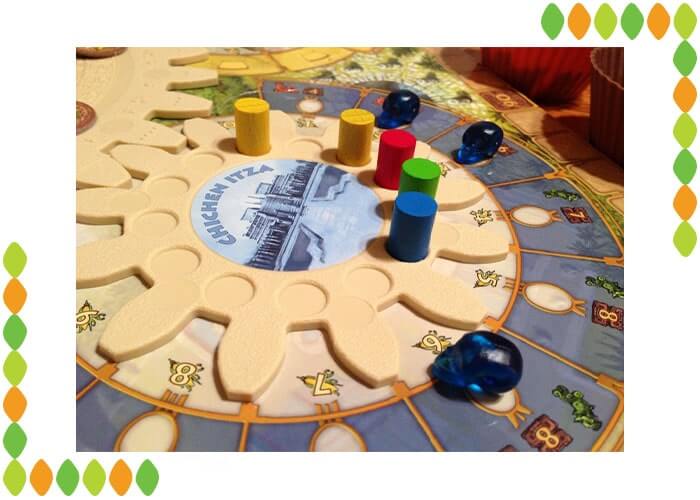
After a few rounds, the workers you placed have now reached higher and better actions and it’s time for you to pick them up. When picking up workers, you are again free to pick up how many you like, but they should be from the same gear. After picking a worker up, you have three choices; perform the action where it was standing for free, perform an action that’s lower than your worker by paying one corn for each step back, or in rare cases do nothing. The order of the actions is up to you.
Each of the five gears or locations on the board features certain types of actions. Let’s see what to do in each location;
- Palenque focuses on harvesting corn and wood from the jungle.
- Yaxchilan allows players to collect more valuable resources, like stone and gold.
- Tikal mostly enables players to advance on technology tracks and construct buildings.
- Uxmal is mostly related to exchanging resources with each other and gaining the favor of the gods.
- Chichen Itza requires players to pay a sacrifice to the gods, granting their favor as well as victory points.
Advance Gears
After all players have taken a turn, the round ends and the calendar advances. To do so, you must rotate the central gear one day counter-clockwise which advances all placed workers by one space. If a worker is placed in the highest space on a gear and the rotation of the gears pushes it off the location, that worker is removed and returned to the owner.
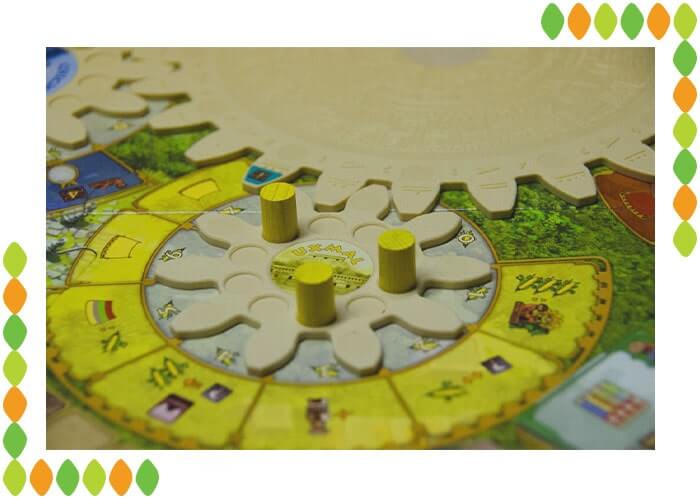
Food Days
In each game of Tzolk’in there are four food days, shown on four of the central gear’s teeth. When the gear turns in a way that the arrowhead points to a food day, the new round is a food day and players must feed their workers. A food day is played like a normal day, but after every player has had a turn and before advancing the calendar, players must do the following;
- Each player must feed their workers in play by paying two corn each. If you are unable to feed any workers, you lose three points for each hungry worker. There are certain buildings in the game called farms that allow you to pay less corn for feeding workers.
- On the second food day which marks the midpoint of the game, the game advances from age 1 to age 2. Remove all unbuilt age 1 buildings from the board, and replace them with age 2 buildings. Monuments are not affected by the changing of ages.
- Orange food days can occur in the middle of an age. Depending on their positions in each god’s temple, players are rewarded with resources and crystal skulls. This means players must hurry to earn the favor of the gods to make the most out of food days.
- Blue food days happen at the end of each age and players are rewarded with victory points. In each temple, players gain points based on their position, with players on the lowest space losing points. Additionally, the highest player in each temple gains bonus victory points.
After the fourth food day, after feeding workers, the central gear would have made a complete revolution, and the game ends. Players score points based on their buildings and resources and add them to their current points. The player with the most points wins!
Final Thoughts
Tzolk’in: The Mayan Calendar is an innovative and well-designed board game that requires short-term and long-term planning and strategy. The unique gear mechanism introduced in the game adds depth to the gameplay, next to the resource management mechanic which makes building a successful tribe challenging.
The game’s historical setting and cultural authenticity, combined with its challenging gameplay and high replayability, make it a standout title in the world of board games. For those of you who enjoy a strategy game mixed with the historical Mayan theme, whether you’re a casual or serious board gamer, Tzolk’in will be a fun experience. So don’t waste any more days on the Gregorian calendar and move back to the days of the Mayan calendar!
Don’t forget to subscribe to our newsletter to stay updated and learn more about this title and other great board games.

